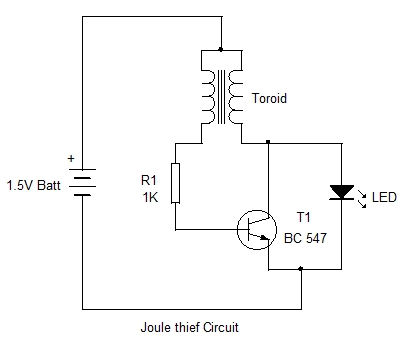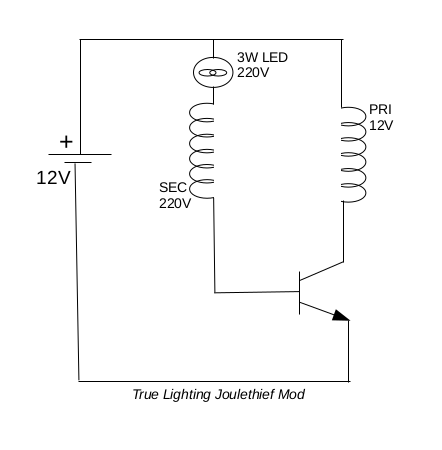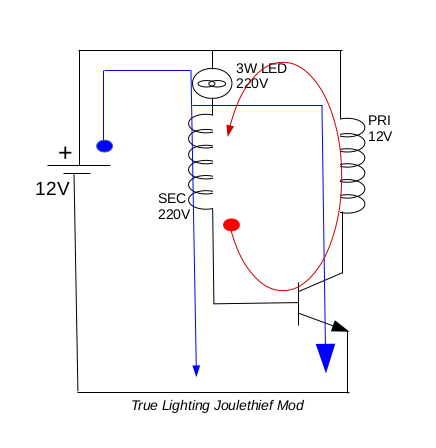Let Us Improve The Joulethief: The True Lighting Mod - Post #4
My loving and sweet wife in her younger years. How privileged I am, I must have been a princely figure in another lifetime having a very supportive partner……...

FROM MEDIOCRE LIGHT TO SOMETHING FOR THE HOUSEHOLD
For this fourth post and a new chapter for modifications in my daily tutorials in trying to expose an unknown approach to lighting technology, it may be best to read the previous three posts first before coming back here, links below after this article. It may be best also if I will describe my approach to teaching this stuff at this point, because I am thinking that I may need to expound firstly on the modifications in about three to four posts so that when we will arrive at the “hands-on” part it will be a much easier understanding and following for those who wants to replicate. I will be delighted as well if non-technical people here will just use it straight as described, all you need is a technician with electronic circuit skills, I assure you anybody in your neighborhoods no matter where you are in the world can build one, the way I described it here will be very elementary for them I assure you. Don’t worry, as I promised here, this is an honest-to-goodness endeavor of mine, I will gladly answer any questions and teach each one. It will be on the modifications part that we will do things seemingly unending (especially the experimentations!!!) due to the many mods of this circuit. The real fun will surely start from there, so all suggestions open at this very point in time.
So welcome back, as previously described, the joulethief circuit below at 1.5 volt battery source will be able to light an LED that is rated at 3 volts, when I say rated, it means that the LED needs 3 volts to light up. Ill display the joulethief diagram once again so that you as the reader can differentiate between the “basic” joulethief and the “modded for true lighting” joulethief:

Based on my previous descriptions, we can clearly see that the basic joulethief had demonstrated to us that a smaller voltage source (1.5 volts) can light up a higher rated LED light (3 volts). So what about if I want to light up a 220 volt LED bulb? Yes, the ones displayed at hardware stores that blinds people because it is very bright, that is the lighting that I want to use here. But let us just limit ourselves first to a 3 watts LED bulb for now so that we can approach this one step at a time to be much more effective. Let me enumerate what we need to accomplish and as what we have learned so far:
-We need to increase the voltage of the battery, from 1.5 volts to 12 volts; for now let us just use the common lead-acid motorcycle battery, but I will discuss in detail about batteries in my future posts here as this will play a very big part in all our future modifications
-We need to increase the LED bulb voltage so as to have a brighter and household-useable lighting, 220 volts at 3 watts will be our specifications
-We need to make sure that the inductor will have 12 volts on its primary and 220 volts on its secondary; this needs to be so because our source battery is just 12 volts, so everytime the inductor gives off its energy on its secondary winding it has to be at 22 volts approximate to light up our LED bulb
Having said these new parameters, our new and modded joulethief circuit should look like this by now:

If we try to analyze, I removed the LED as before (collector to emitter) and placed it at the junction between the battery positive and the base of the transistor, with the 220 volt secondary coil of the inductor in between the transistor base and the LED bulb which is now 220 volts. Now, this arrangement I have to admit is still a mystery to me, and after more than six years of manipulating this I still can not figure out where the joulethief got its “real power” to light up the 220 volt LED bulb. I can assure everyone that this will light up this LED brightly as long as the source battery have juice, take it from me at this point, countless re-arrangements in the past years for such a simplistic circuit will surely erase any doubts of a dummy like me hehe, at least in the lighting up of this LED.
Let me draw the modded joulethief now with the established blue (activation) and red (healing) current flows so that I can explain a bit clearer after, here it is:

AT A TIME WHEN THE TRANSISTOR “CLOSES”
At the initial state of the modded joulethief’s powering up, the current flow is as indicated:
battery positive --→ LED bulb –→ inductor primary --→ transistor base/inductor secondary --→ transistor collector/ inductor secondary --→ transistor negative
This will be a very small current as indicated by the small blue arrow tip followed almost immediately by a huge current as indicated by the big blue arrow tip.
Main point of this description is that when the transistor base is activated (closed), the blue current from the battery will simultaneously flow at the inductor primary towards the collector at a much bigger value, this simultaneous current flow at the collector creates a magnetic field at the inductor primary. Since we know that any current/voltage rise at the inductor’s primary will also create a current/voltage rise at the secondary due to magnetic coupling of the core material, with the voltages in proportion to its rating (12 volts primary means 220 volts secondary), this immediately send a current towards the 220 volts LED bulb resulting the said bulb to light up. Again, in simpler terms, as the primary is being supplied with 12 volts impulses (a thousand times per second), it creates a 220 volts voltage impulse on the secondary, all of these occur very fast our only indicator is a humming sound from the inductor itself. And like the basic joulethief as explained, as long as the 220 volt LED lights up we are so sure that there is the same amount of voltage running through it, what else will be the reason for the LED bulb to light at 220 volts rating if not for this? The example of the unseen wind, remember?
The blue line current activation is a much simpler explanation, as I believe this is still at the level of the type of electricity known to us, but what about if the red line healing current happens? I am no expert here, but I will try to explain as elementary as possible with its current flow as described:
secondary inductor positive --→ transistor base-to-collector --→ primary inductor --→ LED bulb --→ secondary inductor negative
This will be a very small current but higher voltages, and this is as per my backyard experimenter’s view is the main reason why the LED lights up nicely.
For any experts in electronics and electricals here, I already know that there will be a differing opinion haha. Believe me if I say that this very junction of its operation has been debated a lot of times at the offgrid forums, so I will humbly say that this is just my take. I have a feeling that I need to explain as to why I said this to be on my later posts, but for now let me just finish my writeup to gain some STEEMIT points man hahaha. Don’t worry all of you, I will give proofs later as to why I say this is the current flow when the transistor opens and the inductor heals itself.
IDEAS FOR THE NEXT MODS
If we try to analyze, at this arrangement the 220 volts LED lights up to the “disadvantage” of the battery. I say disadvantage because the battery will surely fade as time passes as it lights up the LED bulb thru the inductor. In my previous posts I shared my attitude about these circuits when I saw it at the forums, and always told myself there should be a way, there has to be, that we can do something so that the battery will continue on, but how? Also, due to the minimalist approach to the number of components (just 4x now while it was 5x before on the basic joulethief), there may be need for a protection on the transistor’s continuous operation. Let us keep in mind that voltages at this arrangement is now very high at 220 volts (no more mediocre 3 volts this time around).
I have to tell you that everytime these questions pops up at the forums, so-called university experts on the field of theory, electronics and electricals always discourages everyone. I can not blame them really because that is HOW and WHAT they are taught about at the universities and modern scholarly textbooks, they each have their point, heavy and reasonable points I should say. Looking back I can honestly and humbly say that if I am an expert like them to start with, I could have thought about it the same as they do and could not have solved this riddle. In order for us to know “new” approaches, we have to be honest to ourselves that we also need to be open to new ideas. This openness can not be acquired if we are already “experts”, especially if convinced otherwise by a mediocre backyard enthusiast. So yeah, I have no ill feelings, I can understand them really.
So what will be next then? Well, for sure, we need to find a way to have that battery juiced up and at the same time making some protection for the transistor heavily working at 220 volt levels, any way possible and tangible as long as it is also doable I am open to it. And this will be for our next mod, so stay tuned and be patient as well. See you around.
Previous Links:
https://steemit.com/introduceyourself/@lightingmacsteem/lighting-for-everyone-the-steemit-way
https://steemit.com/offgrid/@lightingmacsteem/7mcde8-lighting-for-everyone-the-steemit-way
https://steemit.com/science/@lightingmacsteem/6aohor-lighting-for-everyone-the-steemit-way
Nice follow me back
Downvoting a post can decrease pending rewards and make it less visible. Common reasons:
Submit
Thanks for this comment.........
Downvoting a post can decrease pending rewards and make it less visible. Common reasons:
Submit
Hi @lightingmacsteem I am @themanualbot, a phcurator and I'm so lucky to find this post of your. A very informative one. I am now following you and expecting for more of these. Please use philippines tag and pilipinas tag for english and filipino post respectively. Thank you!
Edit: Maka earn nakag sakto ug makita na sa kadaghan imong mga post sukad karon sir. :)
Downvoting a post can decrease pending rewards and make it less visible. Common reasons:
Submit
Thanks for the encouragement @themanualbot. Hopefully makit-an sa daghan mga tawo dili lang sa pilipinas king dili sa tibuok pod kalibutan. Para sa tanan ni nga technology, dili ni baligya, LIBRE ni haha. Ang akua ra jud moabut sa daghan kaayu mga tawo og magamit nila.
Downvoting a post can decrease pending rewards and make it less visible. Common reasons:
Submit